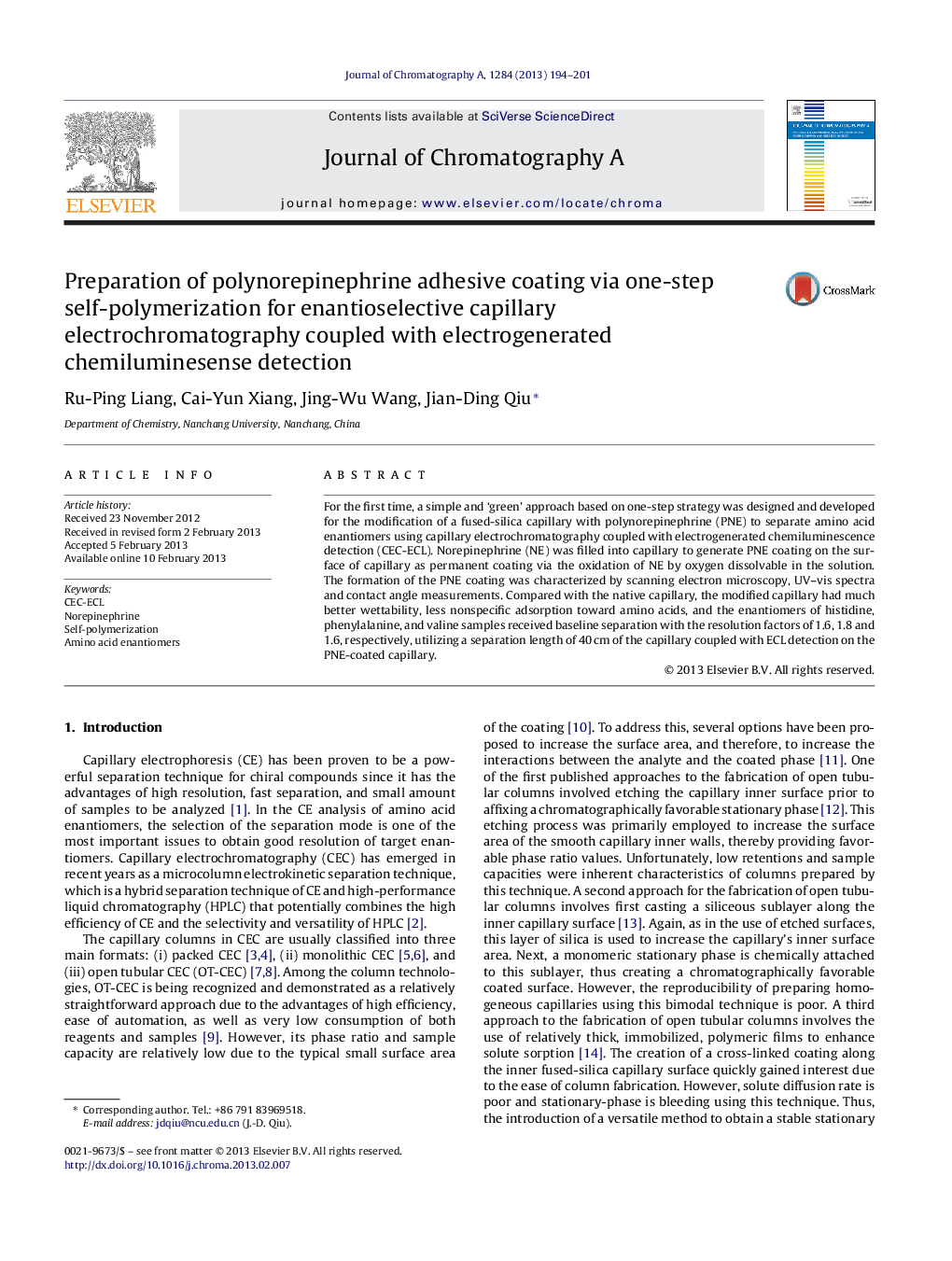| Article ID | Journal | Published Year | Pages | File Type |
|---|---|---|---|---|
| 1204306 | Journal of Chromatography A | 2013 | 8 Pages |
For the first time, a simple and ‘green’ approach based on one-step strategy was designed and developed for the modification of a fused-silica capillary with polynorepinephrine (PNE) to separate amino acid enantiomers using capillary electrochromatography coupled with electrogenerated chemiluminescence detection (CEC-ECL). Norepinephrine (NE) was filled into capillary to generate PNE coating on the surface of capillary as permanent coating via the oxidation of NE by oxygen dissolvable in the solution. The formation of the PNE coating was characterized by scanning electron microscopy, UV–vis spectra and contact angle measurements. Compared with the native capillary, the modified capillary had much better wettability, less nonspecific adsorption toward amino acids, and the enantiomers of histidine, phenylalanine, and valine samples received baseline separation with the resolution factors of 1.6, 1.8 and 1.6, respectively, utilizing a separation length of 40 cm of the capillary coupled with ECL detection on the PNE-coated capillary.
► A one-step strategy for the modification of capillary with polynorepinephrine was designed and developed. ► The polynorepinephrine coating exhibited high stability and hydrophilicity. ► First use of polynorepinephrine to be a chiral selctor to efficiently separate amino acids enantiomers. ► This protocol to fabricate capillary stationary phase was simple and “green”.
